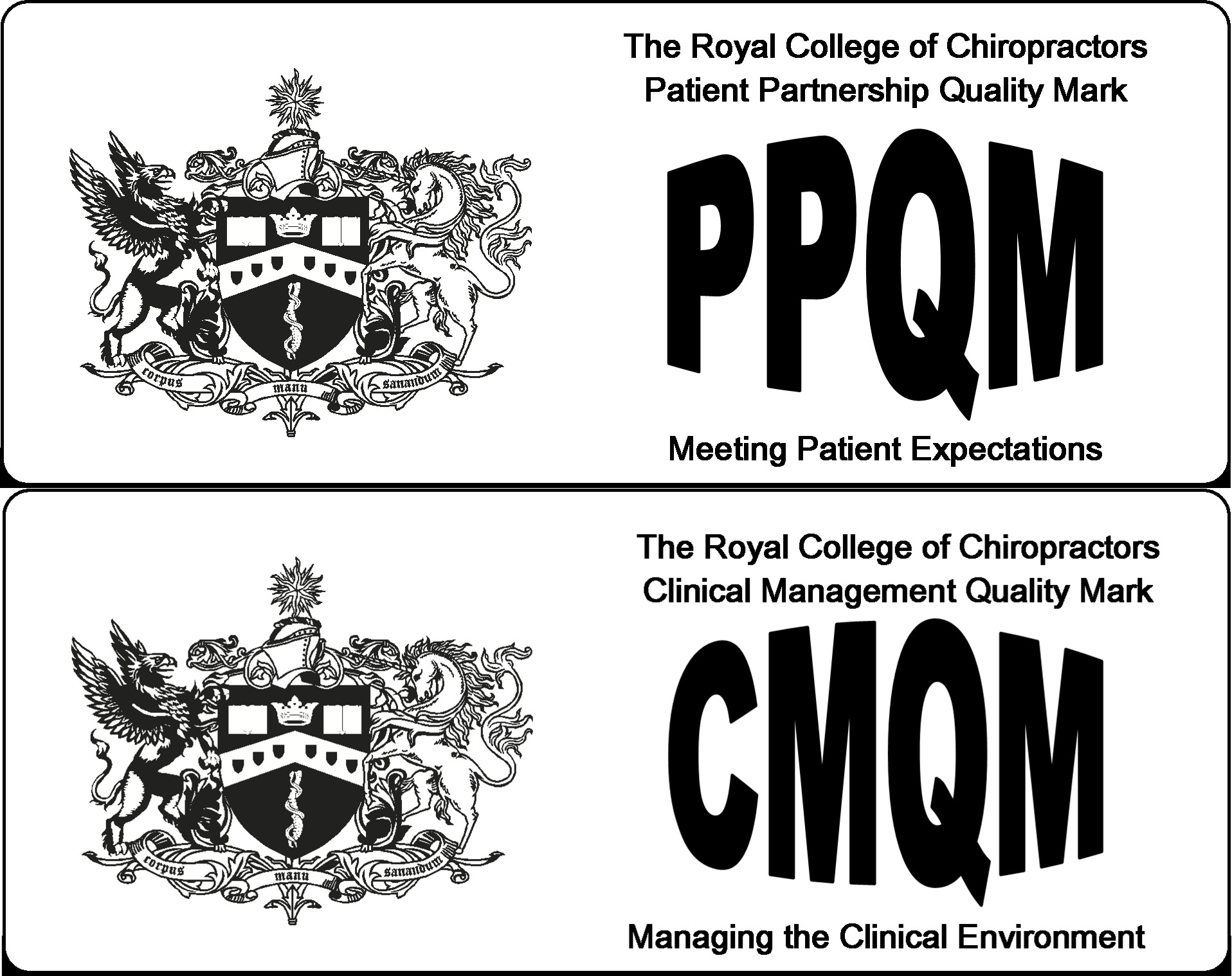Back Pain Relief in Amersham: When to Choose Chiropractic Over Physiotherapy
When experiencing persistent back pain, residents searching for a chiropractor for back pain Amersham often find themselves weighing treatment options, particularly the debate of chiropractic vs physiotherapy Buckinghamshire providers. At Amersham Chiropractic Centre, we regularly encounter patients who’ve tried various approaches without achieving lasting relief, primarily because they haven’t matched their specific condition to the most appropriate treatment modality. Understanding when chiropractic care offers superior outcomes compared to physiotherapy—and recognising conditions where collaborative care proves most effective—enables patients to make informed decisions that accelerate recovery and prevent recurring problems.
Understanding the Core Differences Between Chiropractic and Physiotherapy
Chiropractic care and physiotherapy represent distinct healthcare philosophies with different diagnostic approaches, treatment techniques, and therapeutic goals. Chiropractors focus primarily on the relationship between spine alignment and nervous system function, employing specific adjustments to correct vertebral subluxations—misalignments that interfere with nerve communication between the brain and body. This neurological emphasis means chiropractors view back pain not merely as a localised musculoskeletal issue but as a symptom of broader nervous system dysfunction requiring structural correction.
Physiotherapists approach back pain through a movement and rehabilitation lens, emphasising exercise therapy, muscle strengthening, and functional restoration. Their treatments typically involve stretching programmes, resistance training, and manual therapy techniques designed to improve flexibility, strength, and movement patterns. Whilst physiotherapists may perform spinal mobilisations, these generally involve gentler, repetitive movements rather than the specific, high-velocity adjustments characteristic of chiropractic care.
The diagnostic methods also differ significantly. Chiropractors extensively utilise spinal X-rays to identify structural abnormalities, vertebral misalignments, and degenerative changes affecting spinal biomechanics. They perform detailed postural analyses and specific orthopaedic tests targeting individual spinal segments. Physiotherapists typically focus on functional movement assessments, evaluating how patients perform daily activities and identifying compensatory patterns contributing to pain.
Treatment duration and frequency patterns distinguish these approaches further. Chiropractic care often involves intensive initial treatment phases with multiple weekly visits, gradually reducing as spinal alignment improves. Physiotherapy generally follows less frequent appointment schedules but requires substantial home exercise commitment. These structural differences mean certain conditions respond more favourably to one approach over the other, making informed selection crucial for optimal outcomes.
Common Back Pain Conditions and Their Optimal Treatment Approaches
Acute mechanical back pain, particularly when involving specific vertebral restrictions or facet joint dysfunction, typically responds excellently to chiropractic adjustment. The sudden onset of sharp, localised pain following awkward movements or minor trauma often indicates vertebral subluxation requiring specific manipulation to restore normal joint mechanics. Our chiropractors achieve rapid pain relief through targeted adjustments that immediately improve joint mobility and reduce nerve irritation.
Disc-related problems present more complex treatment considerations. Disc bulges and herniations causing nerve root compression often benefit from chiropractic techniques like flexion-distraction, which creates negative pressure within discs, encouraging nuclear material to retract from nerve roots. However, severe disc injuries with significant neurological compromise might require physiotherapy’s gentler approach initially, progressing to chiropractic care once acute inflammation subsides.
Chronic postural back pain resulting from prolonged desk work or repetitive occupational demands responds well to chiropractic care’s structural correction combined with postural retraining. Whilst physiotherapy exercises strengthen supporting muscles, they may not address underlying spinal misalignments perpetuating poor posture. Chiropractic adjustments restore proper spinal curves and vertebral positioning, creating a stable foundation for postural improvement.
Sciatica and radiating leg pain often originate from multiple sources including piriformis syndrome, sacroiliac joint dysfunction, or lumbar spine issues. Chiropractors excel at differentiating these causes through specific testing and providing targeted treatment. Physiotherapy might effectively address muscular components but may miss subtle joint dysfunctions requiring chiropractic intervention for complete resolution.
Scoliosis management demonstrates clear advantages for chiropractic care, particularly in adolescent idiopathic cases where early intervention can influence curve progression. Specific chiropractic techniques like Chiropractic BioPhysics provide structured protocols for scoliosis correction that physiotherapy’s exercise-based approaches cannot replicate. Adult degenerative scoliosis also benefits from chiropractic care’s ability to maintain spinal flexibility and reduce compensatory strain.
How to Prevent Back Pain: Evidence-Based Prevention Strategies
Spinal Hygiene and Maintenance
- Regular spinal check-ups: Quarterly chiropractic assessments detecting problems before symptoms develop
- Daily spinal mobility exercises: Cat-cow stretches, thoracic extensions, and gentle rotations maintaining flexibility
- Proper sleeping positions: Supportive mattresses and pillows maintaining neutral spine alignment
- Hydration protocols: Adequate water intake maintaining disc hydration and spinal flexibility
- Weight management: Maintaining healthy BMI reducing spinal load and disc pressure
Workplace Ergonomics
- Workstation assessment: Monitor at eye level, keyboard at elbow height, feet flat on floor
- Hourly movement breaks: Two-minute walks or stretches every hour preventing sustained postural strain
- Ergonomic equipment: Lumbar supports, standing desks, and ergonomic chairs supporting proper alignment
- Lifting techniques: Bend knees, engage core, keep load close to body during manual handling
- Stress management: Regular breaks and relaxation techniques reducing muscle tension
Exercise and Strengthening Protocols
- Core stabilisation training: Planks, bird-dogs, and dead bugs strengthening deep spinal stabilisers
- Flexibility maintenance: Daily stretching focusing on hip flexors, hamstrings, and thoracic spine
- Cardiovascular fitness: Regular low-impact activities improving disc nutrition through movement
- Resistance training: Progressive strengthening maintaining bone density and muscle support
- Balance exercises: Single-leg stands and proprioceptive training preventing falls and injuries
Lifestyle Modifications
- Nutrition optimisation: Anti-inflammatory diet rich in omega-3s, vegetables, and whole grains
- Smoking cessation: Eliminating nicotine’s negative effects on disc health and healing
- Stress reduction: Meditation, yoga, or counselling addressing psychological contributors to pain
- Activity pacing: Gradual progression in physical activities avoiding overload injuries
- Footwear selection: Supportive shoes maintaining proper kinetic chain alignment
Why Chiropractic Is Better Than Physiotherapy for Specific Conditions
Chiropractic care offers distinct advantages for conditions involving structural spinal problems requiring specific correction. When vertebral subluxations cause nerve interference, physiotherapy exercises cannot achieve the precise adjustments necessary to restore proper alignment. Our chiropractors possess specialised training in over 100 different adjustment techniques, enabling customised approaches for individual spinal configurations and patient preferences.
The neurological focus of chiropractic care addresses systemic effects of spinal dysfunction that physiotherapy’s musculoskeletal emphasis might overlook. Patients frequently report improvements in seemingly unrelated symptoms—digestive issues, headaches, or sleep problems—following chiropractic adjustment. This occurs because correcting spinal subluxations removes nerve interference affecting organ function, something exercise therapy cannot accomplish.
Diagnostic precision represents another chiropractic advantage. Our detailed X-ray analysis reveals specific vertebral misalignments, degenerative changes, and structural abnormalities guiding targeted treatment. Physiotherapists rarely utilise imaging, potentially missing underlying structural problems contributing to pain. This diagnostic thoroughness ensures we address root causes rather than merely managing symptoms.
Treatment efficiency favours chiropractic care for acute mechanical back pain. Whilst physiotherapy might require weeks of exercises before achieving pain relief, chiropractic adjustments often provide immediate improvement. Research demonstrates that patients receiving chiropractic care for acute low back pain return to work faster and require fewer treatment sessions than those receiving physiotherapy alone.
The hands-on nature of chiropractic treatment ensures proper technique execution. Unlike physiotherapy’s reliance on patient-performed exercises where form errors can perpetuate problems, chiropractic adjustments are precisely delivered by trained professionals. This controlled application eliminates variables that might compromise treatment effectiveness, particularly important for complex spinal conditions requiring exact correction.
How to Fix Back Pain: Comprehensive Chiropractic Treatment Protocols
Initial Assessment and Diagnosis
- Comprehensive health history: Identifying red flags, previous treatments, and contributing factors
- Postural analysis: Digital assessment identifying asymmetries and compensatory patterns
- Orthopaedic testing: Specific tests isolating affected spinal segments and tissues
- Neurological examination: Reflex, sensation, and strength testing evaluating nerve involvement
- X-ray imaging: Weight-bearing films revealing structural abnormalities and subluxation patterns
Acute Phase Treatment
- Specific spinal adjustments: High-velocity, low-amplitude thrusts restoring joint mobility
- Soft tissue therapy: Trigger point release and myofascial techniques reducing muscle spasm
- Ice therapy protocols: 20-minute applications reducing inflammation and pain
- Activity modification advice: Positions and movements to avoid during healing
- Pain relief strategies: Natural alternatives to medication supporting healing
Corrective Care Phase
- Subluxation-specific adjustments: Targeted corrections addressing identified misalignments
- Spinal traction: Decompression techniques reducing disc pressure and nerve irritation
- Rehabilitative exercises: Progressive strengthening supporting spinal corrections
- Postural retraining: Mirror exercises and awareness training establishing proper alignment
- Lifestyle counselling: Addressing contributing factors like stress, nutrition, and sleep
Maintenance and Prevention
- Regular adjustment schedule: Periodic care maintaining spinal alignment and preventing recurrence
- Home exercise programmes: Customised routines supporting long-term spinal health
- Ergonomic implementation: Workplace and home modifications reducing spinal stress
- Performance optimisation: Athletic and occupational enhancement through improved spinal function
- Wellness education: Ongoing guidance about nutrition, exercise, and stress management
Experience the Benefits of Chiropractic Care Today
Advanced Chiropractic Techniques at Amersham Chiropractic Centre
Our chiropractor for back pain Amersham services incorporate cutting-edge techniques beyond traditional manual adjustments. Instrument-assisted adjustments using Activator or Impulse devices provide gentle, precise corrections for patients preferring lighter touch or those with osteoporosis. These tools deliver controlled force to specific vertebrae without the traditional manual thrust, making chiropractic care accessible to broader patient populations.
Flexion-distraction technique proves particularly effective for disc injuries and stenosis. This specialised table-assisted method creates gentle spinal traction whilst simultaneously mobilising spinal segments. The rhythmic pumping action improves disc hydration, reduces nerve pressure, and increases spinal canal space—benefits unattainable through exercise therapy alone.
We utilise Cox Technic for patients with severe degenerative changes or post-surgical cases where traditional adjustments might be contraindicated. This evidence-based protocol provides remarkable results for conditions typically considered physiotherapy candidates, demonstrating chiropractic care’s versatility in managing complex spinal pathologies.
Our integration of soft tissue techniques including Active Release Technique and Graston Technique addresses muscular components often perpetuating back pain. These methods break down scar tissue, improve fascial mobility, and restore normal muscle function—complementing spinal adjustments for comprehensive treatment. This multi-modal approach exceeds what single-discipline physiotherapy typically provides.
Understanding When Combined Care Optimises Outcomes
Whilst debating chiropractic vs physiotherapy Buckinghamshire options, recognising when combined care provides optimal outcomes proves valuable. Certain conditions benefit from chiropractic adjustment to restore structural alignment followed by physiotherapy exercises maintaining corrections. Our collaborative approach with local physiotherapists ensures seamless care coordination when multi-disciplinary treatment serves patients best.
Post-surgical rehabilitation often requires initial physiotherapy for gentle mobilisation and strengthening, progressing to chiropractic care once healing permits more aggressive intervention. We work closely with surgical teams, following specific protocols ensuring safe progression through rehabilitation phases whilst maximising functional recovery.
Complex chronic pain syndromes involving both structural and functional components respond well to integrated treatment. Chiropractic adjustments address spinal subluxations whilst physiotherapy tackles movement dysfunction and muscle imbalances. This comprehensive approach addresses all contributing factors rather than focusing on single aspects.
Sports injuries frequently benefit from combined care, with chiropractic treatment restoring joint mechanics and physiotherapy rebuilding strength and proprioception. Our relationships with local sports physiotherapists enable coordinated care plans optimising athletic recovery and performance. Athletes receive structural correction through chiropractic care whilst developing functional capacity through physiotherapy exercises.
Long-term Management and Wellness Care
Successful back pain resolution extends beyond symptom relief to establishing long-term spinal health maintenance. Our wellness programmes transition patients from corrective care to preventive maintenance, reducing recurrence likelihood and optimising overall health. Regular chiropractic check-ups detect and correct minor subluxations before they become symptomatic, similar to dental check-ups preventing cavity progression.
We develop personalised maintenance schedules based on individual factors including occupation, activity level, stress exposure, and spinal degeneration degree. Office workers might require monthly adjustments countering prolonged sitting effects, whilst manual labourers benefit from fortnightly care managing repetitive strain. These preventive strategies prove more cost-effective than treating recurring acute episodes.
Patient education empowers long-term self-management. We teach spinal awareness techniques helping patients recognise early warning signs warranting professional attention. Our workshops cover topics including proper lifting mechanics, workstation ergonomics, and stress management—providing tools for maintaining spinal health between appointments.
Outcome tracking using validated questionnaires and functional assessments documents progress and guides treatment modifications. We monitor pain levels, functional capacity, and quality of life measures ensuring treatments achieve meaningful improvements. This data-driven approach demonstrates chiropractic care’s effectiveness whilst identifying when treatment plan adjustments are needed.
Conclusion
The decision between seeking a chiropractor for back pain Amersham versus physiotherapy depends on understanding each discipline’s strengths and matching them to specific conditions. Chiropractic care excels at addressing structural spinal problems, providing rapid relief for acute mechanical back pain, and correcting underlying subluxations causing nerve interference. The precision of chiropractic adjustments, combined with comprehensive diagnostic approaches, offers advantages for conditions requiring specific spinal correction.
When evaluating chiropractic vs physiotherapy Buckinghamshire providers, consider that chiropractic’s neurological focus addresses systemic effects of spinal dysfunction beyond localised pain. Our ability to identify and correct vertebral subluxations provides lasting relief by addressing root causes rather than merely managing symptoms. The immediate relief often experienced following chiropractic adjustment, combined with long-term wellness care, offers comprehensive solutions for both acute and chronic back pain.
At Amersham Chiropractic Centre, our experienced chiropractors combine traditional adjustment techniques with advanced therapeutic methods, providing personalised treatment plans addressing individual needs. We recognise when collaborative care with physiotherapists optimises outcomes and maintain professional relationships facilitating integrated treatment when appropriate. Our commitment extends beyond pain relief to establishing long-term spinal health through maintenance care and patient education.
Don’t let back pain limit your life quality or prevent you from enjoying daily activities. Whether you’re suffering from acute injury, chronic pain, or seeking preventive care, professional chiropractic assessment can identify underlying issues and provide effective solutions. Contact Amersham Chiropractic Centre today to discover how our specialised approach to spinal health can help you achieve lasting relief and optimal wellness. Your journey to a pain-free, active life begins with understanding your treatment options and choosing the approach best suited to your specific condition.






